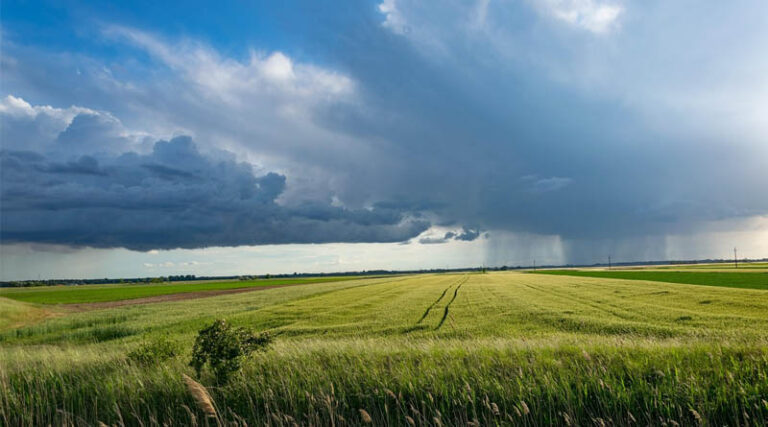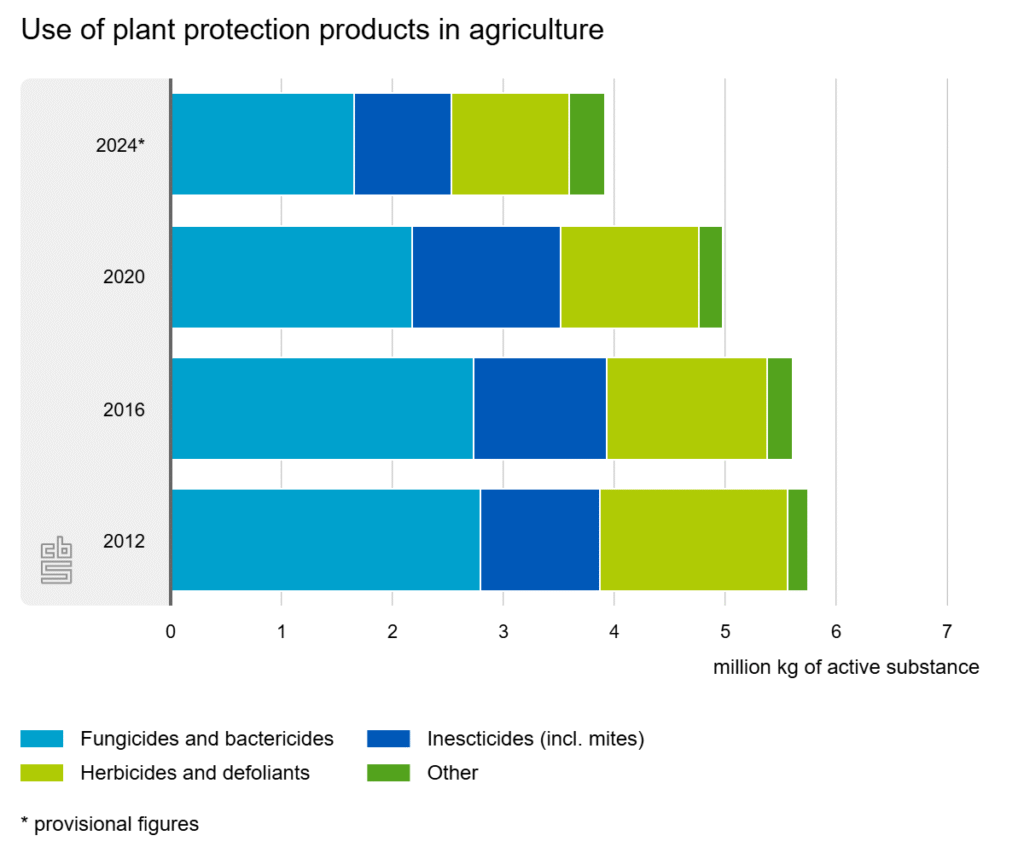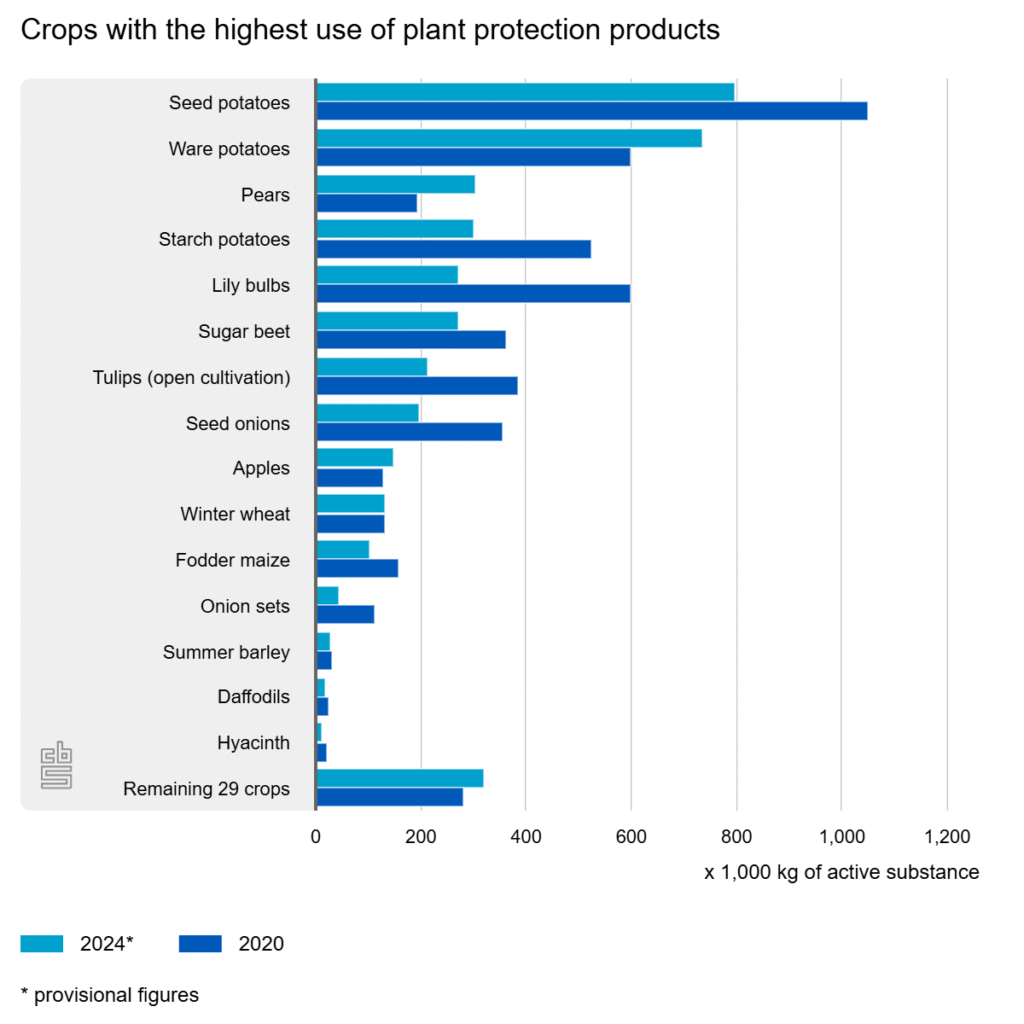
Netherlands: Use of Pesticides in Agriculture Down by Over 20 Percent Since 2020
18 November 2025, Netherlands: The agriculture sector used 3.9 million kilograms of plant protection products in 2024, a decrease of more than 22 percent since 2020. Usage per hectare was 5.6 kilograms, down from 7.1 kilograms in 2020. Fewer pesticides were used to control fungi, weeds and insects, and the use of pesticides in the cultivation of lilies more than halved in that period. This is according to new figures from Statistics Netherlands (CBS) on the use of pesticides and plant protection products on 44 different agricultural crops.Plant protection products are are used in agriculture to prevent or control diseases, pests or weeds. Farmers used these products on nearly 98 percent of the agricultural land used to grow the 44 crops included in this study. That percentage has hardly changed since 2020. Plant protection products include both products that work using chemically active substances and those based on microbiologically active sub-stances (such as viruses or bacteria). Some of these products are also classified as green plant protection products, such as paraffin oil. In 2024, 26 percent of all plant protection products used were classified as green.
Statistics Netherlands carries out a survey among agricultural holdings every four years to find out how much pesticides they use on each crop. Weather conditions play a major role in the use of pesticides: 2024 was a very wet year, while 2020 was on the dry side. Both years were warmer than average.
Use of fungicides and bactericides down by a quarter
Crop growers (both arable and horticultural) used nearly 1.7 million kilograms of plant pro-tection products in 2024 (measured in terms of the relevant active ingredient) in order to control fungi and bacteria. That was 24 percent less than in 2020, partly as a result of the ban on mancozeb (effective since 2021). At 42 percent of the total, fungicides and bacteri-cides remain the most widely used group of plant protection products, however.
With respect to herbicides and defoliants, over 1.1 million kilograms of active substances were applied, 15 percent less than in 2020. The volume of pesticides used to control insects and mites was down by 34 percent.
At the same time, the sector is also using more active agents in the ‘other’ category – to control slugs or regulate plant growth, for instance. This group includes some active agents that are permitted for use in organic farming.

Pesticide usage by lily growers down by more than half
In 2024, more than half of plant protection products were used to grow potatoes and lilies, as was also the case in 2020. Lily growers used 273 thousand kilograms of plant protection products in 2024, compared to 601 thousand in 2020. They are now using 220 thousand kilograms less paraffin oil, and while in 2020 they used 114 thousand kilograms of man-cozeb, the use of that fungicide has now been banned. As a result, fungicide usage in lily cultivation is now 72 percent lower than it was in 2020.
On the other hand, arable farmers used 23 percent more plant protection products to grow potatoes for consumption (ware potatoes) in 2024. It was a wet year, which meant that the chance of potato blight was higher than average. More fungicides and bactericides were used as a result: 445 thousand kilograms, up from 320 thousand kilograms in 2020.
For over half of the 42 agricultural crops surveyed in both years, less pesticides were used in 2024 than in 2020.

Most intensive usage per hectare in greenhouse roses
Growers use the most plant protection products per hectare (75 kilograms) to cultivate roses in greenhouses. In 2020, the quantity used was only 40 kilograms per hectare. More green plant protection products are being used now than four years ago. After roses, the largest quantity of plant protection products per hectare is used to cultivate chrysanthemums in greenhouses, and then lilies. The higher usage per hectare for greenhouse cultivation is partly due to the use of microbiological, green agents. In the case of lilies, the use of paraffin oil per hectare is falling rapidly.
In addition to flowers and flower bulbs, relatively large quantities of plant protection products are used to grow seed potatoes, apples and pears (between 20 and 30 kilograms of active substance per hectare). In onion cultivation, the use per acre has more than halved.

📢 If You’re in Agriculture, Make Sure the Right People Hear Your Story.
From product launches to strategic announcements, Global Agriculture offers unmatched visibility across international agri-business markets. Connect with us at pr@global-agriculture.com to explore editorial and advertising opportunities that reach the right audience, worldwide.






